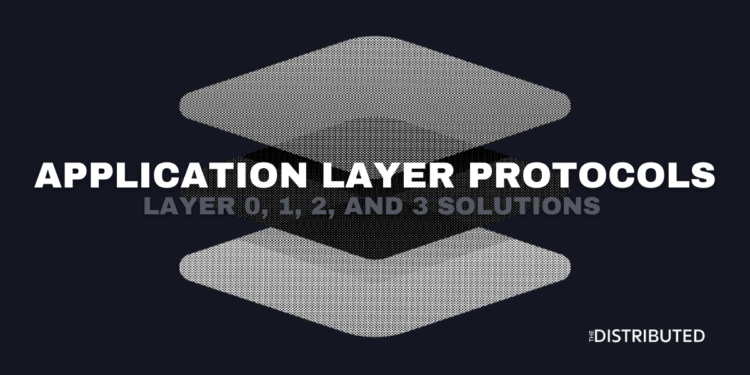Any sustainable system requires the ability to adapt to changes. A blockchain protocol is a critical part of any distributed ledger, facilitating the communication of vital information such as; transaction validation, system security, the interaction of participating nodes, etc. [1]CoinMarketCap – What Are Application Layer Protocols?
It is within these protocols that change within a blockchain takes place. However, there are only so many changes that can be made to a protocol itself. Therefore, there are different application layers that work hand in hand with blockchains to solve the blockchain trilemma of scalability, security, and decentralization.
What Is A Layer 0 (L0) Protocol?
L0 is the framework or base protocol of a blockchain. The foundation includes; consensus algorithms, hardware, miners, connection/internet along with various other factors working to secure a network. L0 serves to secure the L1 system.
An example of an L0 protocol is Cosmos SDK the most popular framework for building blockchains such as Binance’s L1, Binance Chain (BNB). This framework allows developers to customize a blockchain to their needs along with allowing interoperability between chains, which isn’t encoded within a lot of L1 protocols.
What Is A Layer 1 (L1) Protocol?
An L1 blockchain is a set of solutions added to the base protocol in order to improve the functionality and scalability of a system. L1 can be thought of as the foundational layer of a blockchain. This layer is in charge of vital functions of the system, such as consensus mechanisms, programming languages, and mining rates along with various other rules to maintain the functionality of the blockchain. [2]CoinTelegraph – A beginner’s guide to understanding the layers of blockchain technology
L1 solutions don’t require the addition of systems on top of the existing blockchain. Rather changes are made to the protocol of the system, through consensus mechanisms. Along with consensus protocol changes, sharding is a very common solution.
The most popular Layer 1 blockchain tokens include;
What Is A Layer 2 (L2) Protocol?
An L2 blockchain is a secondary framework built independently upon an existing L1 system. L2 protocols exist to solve various issues such as transactions per second issues and scaling while staying off the main chain. [3]Binance Academy – Layer 2
Notably, using an off-chain solution allows for the inherent structure of the main chain to stay exactly the same. This keeps the original chain secure, as there is less chance for errors in something such as the code. Since L2 protocols take a portion of the workload on behalf of L1, the application layer is able to utilize the security of the base blockchain.
The most popular Layer 2 blockchain tokens include;
What Is A Layer 3 (L3) Protocol?
Layer 3’s allows for protocols that enable applications to be built upon it, commonly known as the application layer.
L3 protocols facilitate the use of dApps, DeFi, and games bringing real-world use for blockchains outside of cryptocurrencies.
L3 systems aim to create trustless interoperability between blockchains L1 and L2 protocols.
The most popular and used Layer 3 tokens and applications are;
References



